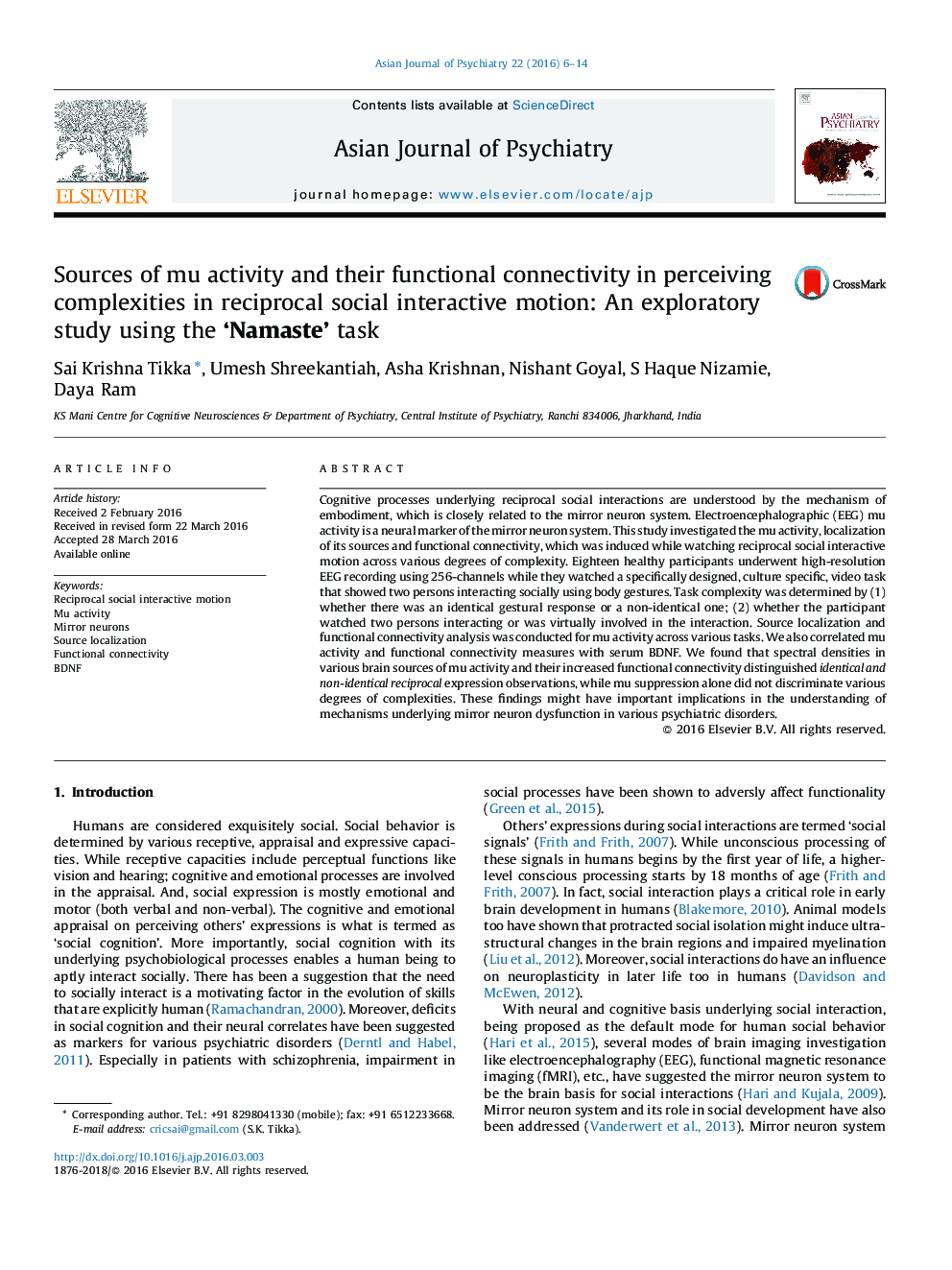| کد مقاله | کد نشریه | سال انتشار | مقاله انگلیسی | نسخه تمام متن |
|---|---|---|---|---|
| 317257 | 1432581 | 2016 | 9 صفحه PDF | دانلود رایگان |
• The study investigates EEG mu activity as a Social-Neural marker of the mirror neuron system.
• Response to various degrees of complexities of ‘reciprocal social interactive motion’ was assessed.
• Mu suppression alone did not discriminate various degrees of complexities.
• Mu spectral densities in certain brain sources distinguished degrees of complexity.
• Increased functional connectivity between these sources also distinguished degrees of complexity.
Cognitive processes underlying reciprocal social interactions are understood by the mechanism of embodiment, which is closely related to the mirror neuron system. Electroencephalographic (EEG) mu activity is a neural marker of the mirror neuron system. This study investigated the mu activity, localization of its sources and functional connectivity, which was induced while watching reciprocal social interactive motion across various degrees of complexity. Eighteen healthy participants underwent high-resolution EEG recording using 256-channels while they watched a specifically designed, culture specific, video task that showed two persons interacting socially using body gestures. Task complexity was determined by (1) whether there was an identical gestural response or a non-identical one; (2) whether the participant watched two persons interacting or was virtually involved in the interaction. Source localization and functional connectivity analysis was conducted for mu activity across various tasks. We also correlated mu activity and functional connectivity measures with serum BDNF. We found that spectral densities in various brain sources of mu activity and their increased functional connectivity distinguished identical and non-identical reciprocal expression observations, while mu suppression alone did not discriminate various degrees of complexities. These findings might have important implications in the understanding of mechanisms underlying mirror neuron dysfunction in various psychiatric disorders.
Journal: Asian Journal of Psychiatry - Volume 22, August 2016, Pages 6–14
